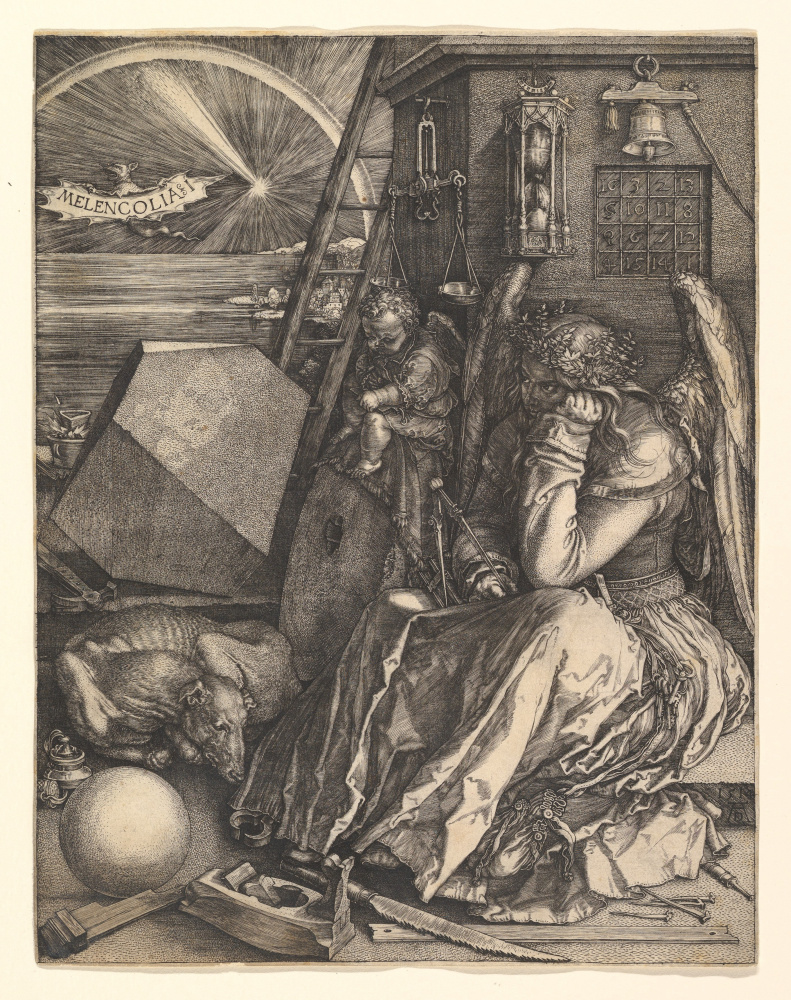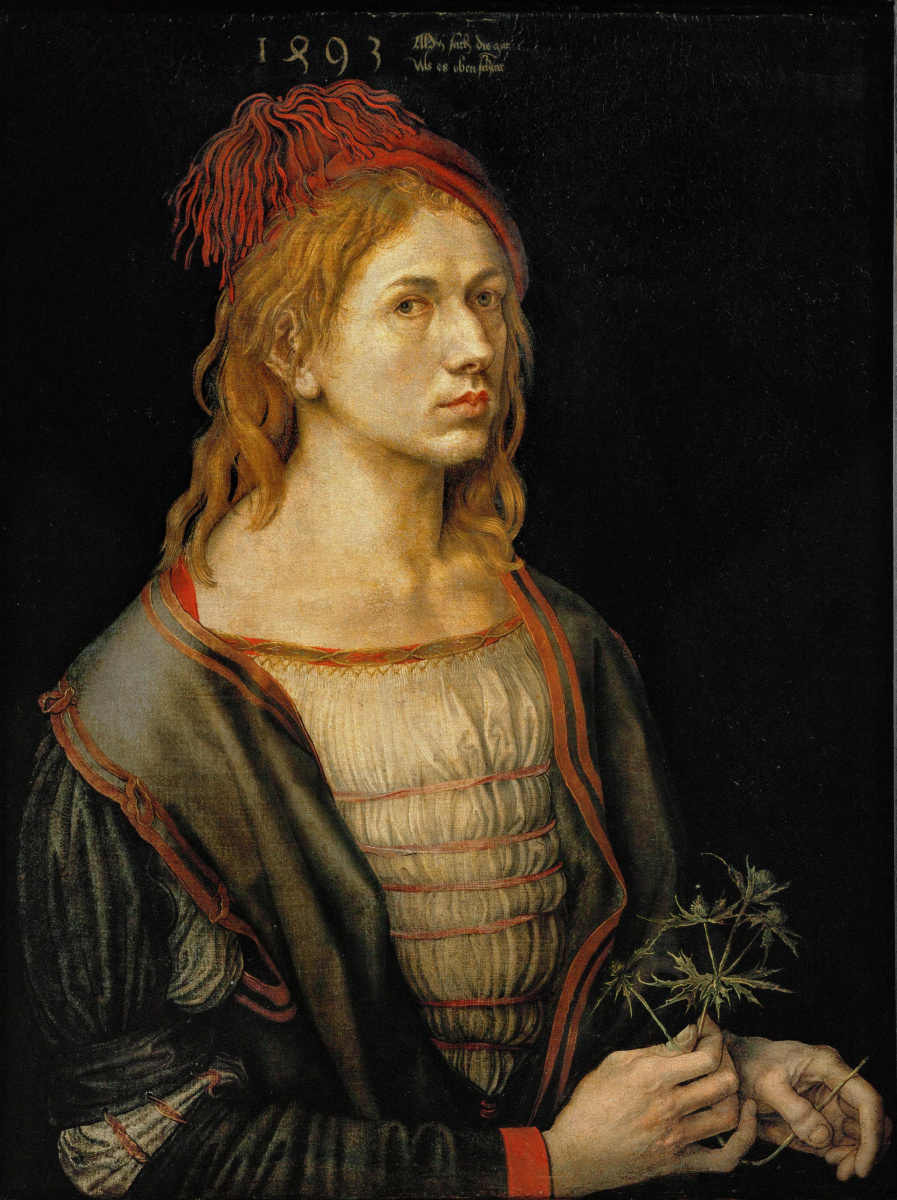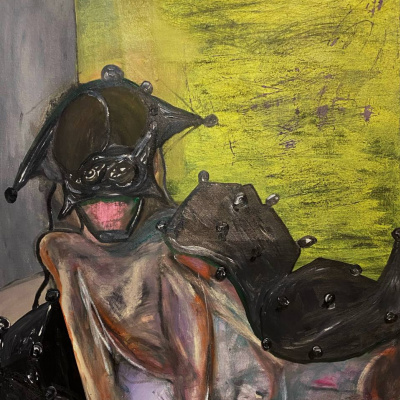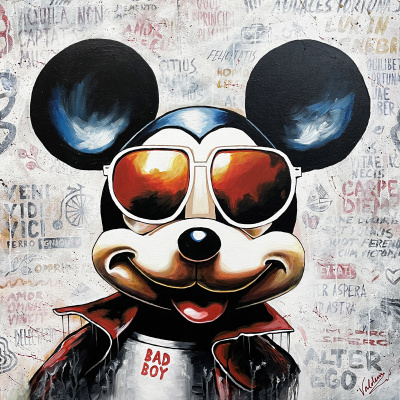Algebra and Harmony do not always get along in one head, except for Albrecht Dürer's. His hand wrote numbers perhaps more often than he drew his pencil or brush strokes. Dürer was not only an artist but also the author of several books. He wrote Four Books on Proportions and Instructions for Measuring with Compass and Ruler, worked on a painting textbook and studied the fortification theory. Well, his Diary of His Journey to the Netherlands is just an issue and receipt register, full of numbers: how much he spent on breakfast, how much he paid to a servant… Yes, the numbers speak not only about the important, but also about everyday, small and vain. But all these are details of the life of the great creator and researcher.

The 3rd. The future graphic artist and painter Albrecht Dürer was the third child among 18 children of jeweller Albrecht Dürer and his wife Barbara. The third and oldest of the three offsprings who survived to adulthood. The other 15 children of the Dürers died in childhood or adolescence.
Albrecht Dürer Jr. was 13 years old when he looked in the mirror and painted his portrait. It is noteworthy that in Germany, there was almost no genre of self-portrait at that time. At least, such works were extremely rare. Therefore, we can say that the young artist made a discovery by capturing his own appearance. He drew with a silver pencil. The line made by such a pencil cannot be erased, which means that work in this technique does not suppose corrections and requires accuracy and skill from the author.
Albrecht was 14 years old when his father said goodbye to the idea that his son would continue his business, and sent the failed jeweller to study under the artist Michael Wolgemuth.
Albrecht Dürer's "wanderings" lasted for 4 years: each apprentice had to go through this craft learning stage. His exact route is unknown, but we are exactly aware that during his life Dürer committed:
2 visits to Italy;
2 visits to Switzerland;
2 years spent he in the Netherlands.
Albrecht Dürer Jr. was 13 years old when he looked in the mirror and painted his portrait. It is noteworthy that in Germany, there was almost no genre of self-portrait at that time. At least, such works were extremely rare. Therefore, we can say that the young artist made a discovery by capturing his own appearance. He drew with a silver pencil. The line made by such a pencil cannot be erased, which means that work in this technique does not suppose corrections and requires accuracy and skill from the author.
Albrecht was 14 years old when his father said goodbye to the idea that his son would continue his business, and sent the failed jeweller to study under the artist Michael Wolgemuth.
Albrecht Dürer's "wanderings" lasted for 4 years: each apprentice had to go through this craft learning stage. His exact route is unknown, but we are exactly aware that during his life Dürer committed:
2 visits to Italy;
2 visits to Switzerland;
2 years spent he in the Netherlands.
Self-portrait with a sketch of the arms and cushion (front side of sheet)
1493, 27.8×20.2 cm
Albrecht Dürer was 23 years old when he married. The bride was chosen by his father. Agnes was the daughter of a friend of Dürer Sr., Hans Frey, a man of many talents. Hans Frey was a jeweller and musician, he made musical instruments himself, and also created fountains. His wife came from a noble family. The Frey family held a prominent position in Nuremberg, and marrying Agnes raised the status of the young artist.
According to Erasmus of Rotterdam, 2 colours were enough for Dürer "to convey all the splendour of the visible world". We are talking about black and white engravings.
Dürer mastered 2 engraving techniques and became an exception to the general rule. Artists of that time were only engaged in one thing, either woodcut (creation of engravings on wood) or copperplate engraving . Engravings brought Dürer a more tangible income than painting, because one cut matrix could produce (to sell) more than one hundred prints. In this genre, Dürer created his famous series of works: Apocalypse, Life of Mary, Passions and others.
According to Erasmus of Rotterdam, 2 colours were enough for Dürer "to convey all the splendour of the visible world". We are talking about black and white engravings.
Dürer mastered 2 engraving techniques and became an exception to the general rule. Artists of that time were only engaged in one thing, either woodcut (creation of engravings on wood) or copperplate engraving . Engravings brought Dürer a more tangible income than painting, because one cut matrix could produce (to sell) more than one hundred prints. In this genre, Dürer created his famous series of works: Apocalypse, Life of Mary, Passions and others.
Rhino
1515, 23.8×29.9 cm
About 1,000 drawings are the graphic heritage of Albrecht Dürer, one of the largest figures in European art. Dürer used different materials and techniques — he drew with pen and brush, silver pencil, ink, chalk, charcoal, watercolour
, on white and coloured paper. Even Dürer's sketches for his major works and engravings are carefully crafted, finished works.
2 times complained Albrecht Dürer to the authorities about plagiarism, first in Venice and then in Nuremberg. Both times the effect was negligible. In Venice, Marcantonio Raimondi, who forged Dürer's works, was forbidden to reproduce the monogram of the real author, whereas Marcantonio was still allowed to copy the engravings. Other numerous plagiarists were only threatened with confiscation of their property and other punishments.
209 cm is the height of the boards on which Albrecht Dürer painted the Adam and Eve diptych. This work became the first life-size image of completely naked people in German painting. In the 18th century, the diptych was in the Academy of Fine Sciences of San Fernando (Madrid), later, in the 19th century it has been taken to the Prado Museum, but in both cases access to the ‘obscene' images was restricted.
2 times complained Albrecht Dürer to the authorities about plagiarism, first in Venice and then in Nuremberg. Both times the effect was negligible. In Venice, Marcantonio Raimondi, who forged Dürer's works, was forbidden to reproduce the monogram of the real author, whereas Marcantonio was still allowed to copy the engravings. Other numerous plagiarists were only threatened with confiscation of their property and other punishments.
209 cm is the height of the boards on which Albrecht Dürer painted the Adam and Eve diptych. This work became the first life-size image of completely naked people in German painting. In the 18th century, the diptych was in the Academy of Fine Sciences of San Fernando (Madrid), later, in the 19th century it has been taken to the Prado Museum, but in both cases access to the ‘obscene' images was restricted.
Adam and Eve
1507
34 is the magic constant of the Dürer square. In the famous Melancholy engraving
, the artist depicted a square of 4×4 cells. They contain numbers from 1 to 16. The sum of the numbers in each vertical, horizontal and diagonal is 34. The same number is obtained by adding four numbers inside the square, and by adding the numbers in its corners. You can consider only the angular squares (2×2 cells), you can make L-shaped moves through the cells — in any case, we get the same constant. Moreover, in his magic square, the artist encrypted the date of his mother’s death, as well as the year of creation of the Melancholy, year 1514.
Melancholy
1514, 23.8×18.6 cm
35 sheets is the volume of Dürer's illustrated Fencing Book. The book contained 120 drawings describing the wrestling techniques, and 80 drawings of fencing techniques. By the way, Dürer knew this topic not only in theory, as he himself knew the techniques of fencing and wrestling.
275 guilders is the amount Albrecht Dürer paid for a house in Nuremberg. The artist lived in this house from 1509 until his death in 1528.
Albrecht Dürer was to receive 100 guilders annually from the city treasury of Nuremberg. This was ordered by Emperor Maximilian I in 1515. However, in 1519 the emperor died, and the Nuremberg authorities stopped these payments. Dürer then went to the Netherlands for the coronation of Charles V, who later confirmed Dürer's right to a pension of 100 guilders.
275 guilders is the amount Albrecht Dürer paid for a house in Nuremberg. The artist lived in this house from 1509 until his death in 1528.
Albrecht Dürer was to receive 100 guilders annually from the city treasury of Nuremberg. This was ordered by Emperor Maximilian I in 1515. However, in 1519 the emperor died, and the Nuremberg authorities stopped these payments. Dürer then went to the Netherlands for the coronation of Charles V, who later confirmed Dürer's right to a pension of 100 guilders.

The 1st. Dürer was the first artist in history to create his own logo, the brand, his famous author’s mark "A.D.". However, he did not limit himself to this logo and often wrote long phrases in his works. For example, the inscription on the dark background of his Self Portrait with a Thistle reads: "My sach die gat / Als es oben schtat". This is translated as "My affairs follow the course allotted to them on high". He meant the marriage of the submissive son to a girl found by his father.
Self-Portrait with a Thistle
1493, 56×44 cm

"A.D." is not just a monogram, a logo depicting the initials of the artist’s name. "A.D." is not just a monogram, a logo depicting the initials of the artist’s name. Researchers believe that the designation has a deeper meaning: it is also a reference to Anno Domini — "after Christ".
9 guilders would be the minimum amount to pay, if someone "wanted to buy all his [Dürer's] engravings, of which there are a great many." This is what his friend and neighbour, calligrapher and mathematics teacher Johann Neiderfer wrote in his work, Reports of the Most Famous Artists and Workers of Nuremberg, after the artist’s death. By the way, "a great many" is more than 450 engravings on wood and copper.
Christie’s auction house raised $ 6 million in 2013 for a collection of Dürer's prints. The buyer paid the most for the Rhinoceros engraving — 866,500 dollars. This became a record auction price for the artist’s work. The previous record was set in 2011, when the Adam and Eve engraving was sold for 409,250 pounds (653,300 dollars).
Christie’s auction house raised $ 6 million in 2013 for a collection of Dürer's prints. The buyer paid the most for the Rhinoceros engraving — 866,500 dollars. This became a record auction price for the artist’s work. The previous record was set in 2011, when the Adam and Eve engraving was sold for 409,250 pounds (653,300 dollars).

Image source, with reference to ottmar-hoerl.de — photo by Johannes Marburg
7,000 green plastic hares flooded Nuremberg’s Market Square in 2003. The hares were "bred" by a conceptual artist Ottmar Hörl. In this original way, he celebrated the 500th anniversary of one of Dürer's most popular works, A Young Hare, and joked about its rampant commercial circulation. Hörl's installation covered an area of 2,500 square meters.
Albrecht Dürer was 56 when he died.
0. The last figure does not concern the work, but the personal life of Albrecht Dürer. The great artist and his wife Agnes had no children. His two brothers has no children (at least legal) either. The genus that gave the world a genius was interrupted.
Albrecht Dürer was 56 when he died.
0. The last figure does not concern the work, but the personal life of Albrecht Dürer. The great artist and his wife Agnes had no children. His two brothers has no children (at least legal) either. The genus that gave the world a genius was interrupted.





















